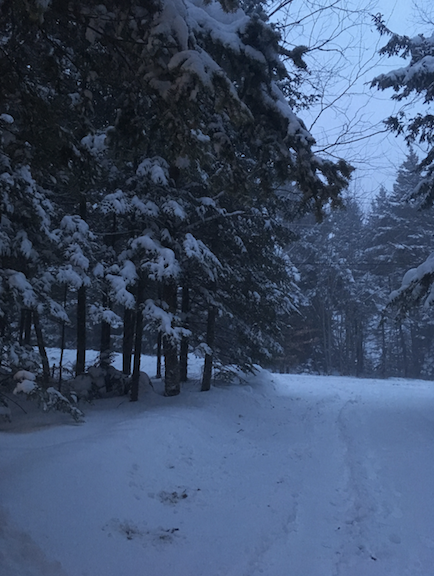Snowfall on Pasture Path, White Mountains, New Hampshire

I spent this past week inside a house with my dog in the White Mountains of New Hampshire. The first full day there, it snowed 19 inches. Snow creates the perfect writing landscape. Muffled, the world slows down.
I turned my thoughts to timber rattlesnakes and snowshoe hares while I drafted two new essays that week. A few years ago I spent many days following biologists into the New England world collecting rattlesnakes, which are kind of beautiful, poisonous, and rare now. I have never finished that story but realized the story I really wanted to write is more personal than a straight journalistic investigation into snake poaching and other threats to these creatures. The scientists release their snakes later. The poachers sell them on the black market. I’ve revisited all of my notes, memories, photos, and impressions as I write this piece.
Snowshoe hares aren’t dwindling in numbers, but humans have messed around with their populations for many decades. For a half century, New Hampshire alllowed nearly unlimited hunting of them and ended up importing hares from Maine every year. They don’t do that anymore, and I wonder if the hares I have seen were the great-great-great-etc. grandchildren of Maine hares. They rarely show themselves, but I’ve encountered two at close range in my life, both at night. To me they embody the “wild” in wild animals. They bound around from plant to branch, eating pounds of vegetation a day while living in a constant state of fear. Owls and lynxes could swoop down at any second and kill and eat them. Hares breed like rabbits. Mothers give birth to several litters a year. Most of them don’t survive.
It’s an ancient practice for writers, leaving home for a quiet writing spot. I can work anywhere, but I hone my ideas and figure out what I know best alone in a house staring at mountains or at the falling snow concealing them.
